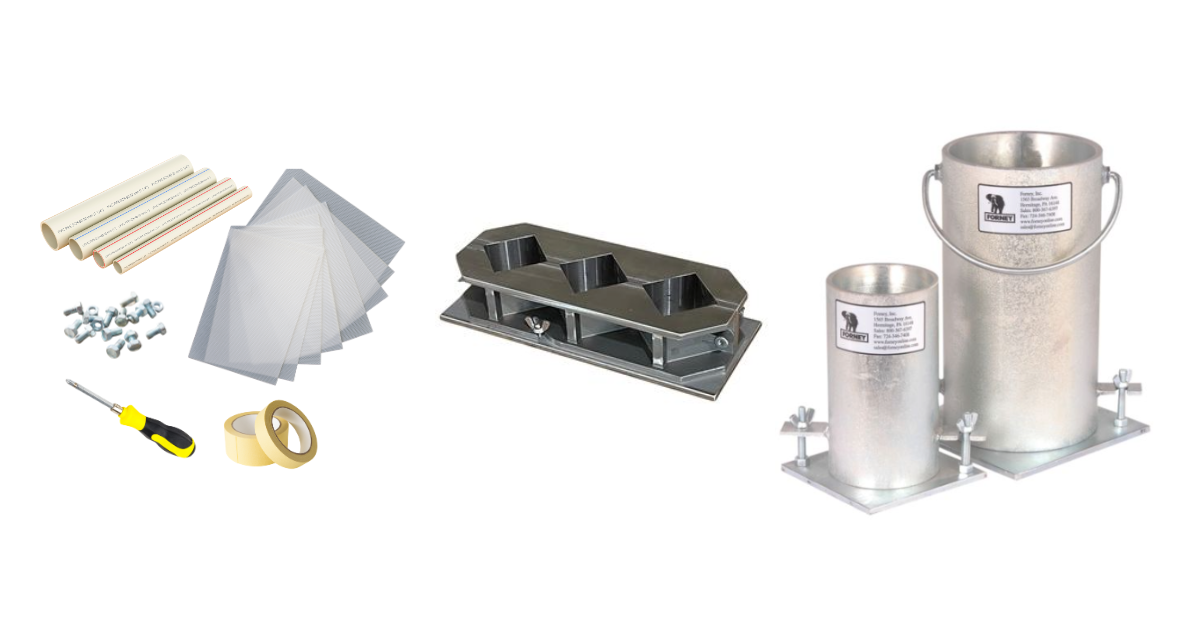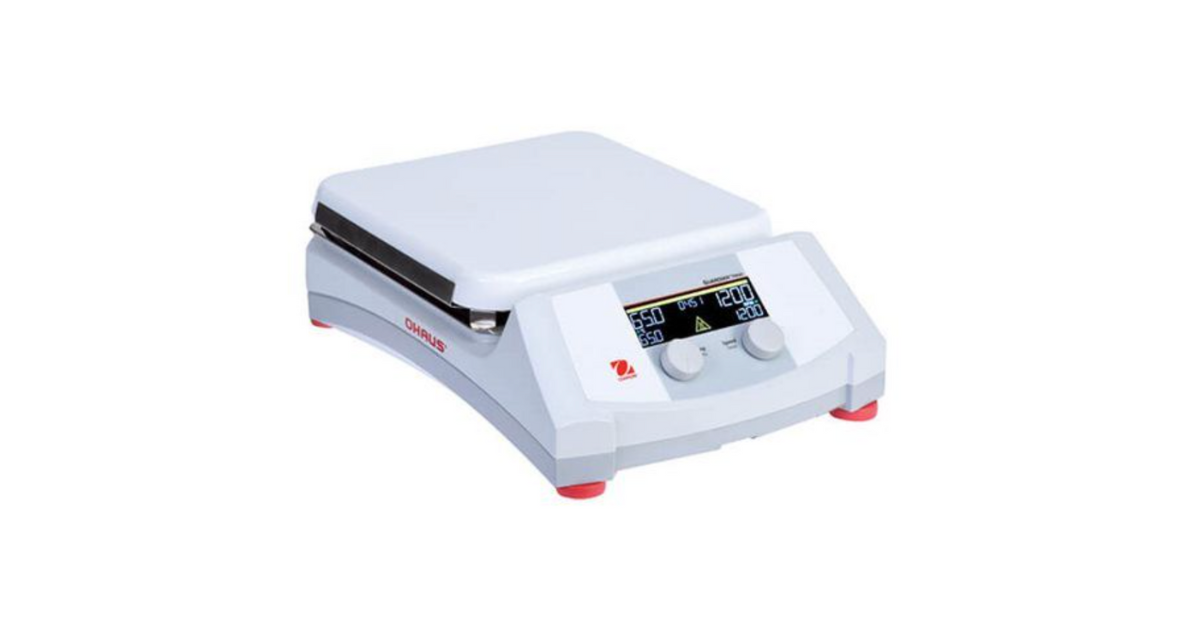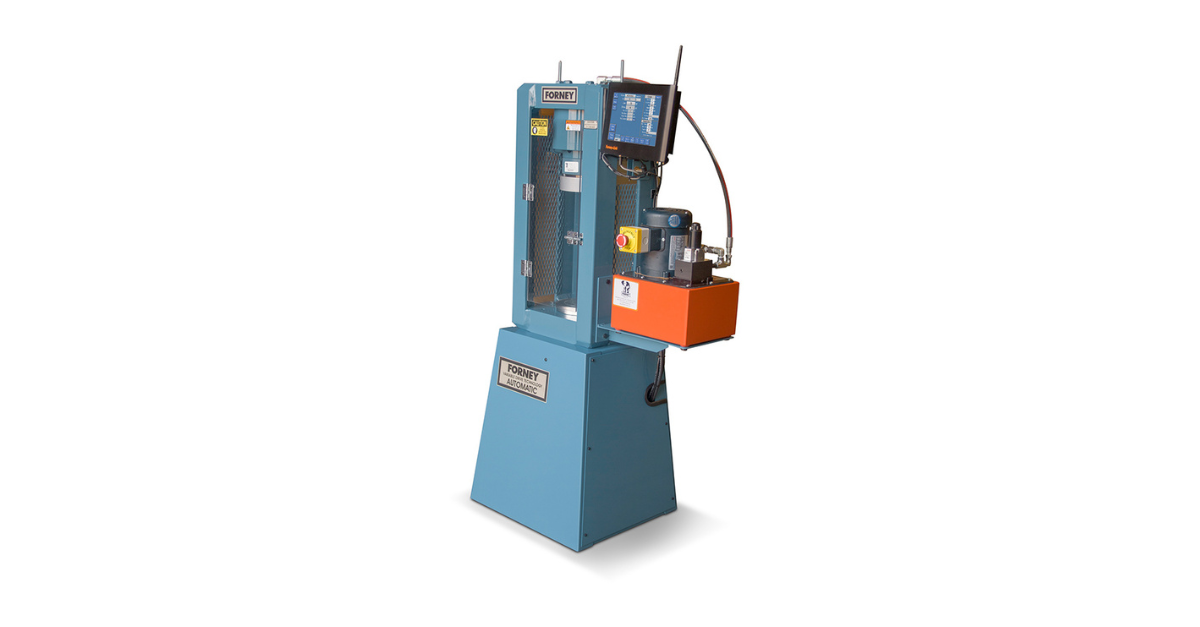In industrial environments with harsh chemicals, high heat, and heavy loads, materials must withstand both mechanical stress and chemical exposure. ASTM C579 provides standard test methods for evaluating the compressive strength of these materials to ensure long-term performance.
In this simple guide, we cover the basics of ASTM C579:
- ASTM C579 Materials & Test Methods
- Recommended Equipment for ASTM C579
- ASTM C579 Test Preparation, Procedure & Results
Materials & Test Methods Covered in ASTM C579
ASTM C579 covers chemical-resistant mortars, grouts, monolithic surfacings, and polymer concretes based on resin, silicate, silica, or sulfur binders.
Chemical-Resistant Mortars
- Chemical-resistant resin mortar: A mixture of liquid resinous material, filler materials, and setting agent that form a trowelable mortal that hardens by chemical reaction.
- Chemical setting silicate and silica chemical-resistant mortar: A mixture of a silicate or silica binder (either liquid or a powder with added water), chemically inert solid filler, and setting agent.
- Sulfur mortar: A mixture of molten sulfur and inert aggregates, such as carbon or silica flour, plus small amounts of modifying additives.
Grouts
- Chemical-resistant resin grout: A mixture of liquid resin, fillers, and setting agents that chemically harden to form a flowable grout with high strength and chemical resistance.
- Chemical-resistant polymer machinery grout: A mixture of liquid resin, fillers, and hardeners designed to create a strong, chemically resistant base for supporting heavy equipment.
- Chemical-resistant tile grout: A mixture of liquid resin, fillers, and setting agents formulated to fill joints between chemical-resistant tiles or bricks, hardening to form durable, tight joints.
Monolithic Surfacings
- Broadcast resin monolithic floor surfacing: A flooring system where catalyzed resin binder is applied to concrete, then dry inert filler is spread over it.
- Chemical-resistant resin monolithic surfacing: A mixture of liquid resin, fillers, and setting agents that are placed and hardened to form a bonded, chemical-resistant overlay.
- Slurry-broadcast resin monolithic surfacing: A flooring system where dry inert filler is mixed with catalyzed resin binder to create a semi-flowable mixture that is then poured onto concrete, spread to desired thickened, and seeded with more dry inert filler.
Polymer Concretes
- Chemical-resistant polymer concrete: A composite material made of aggregates bonded together by a polymer resin that is resistant to chemical attack.
- Sulfur polymer cement concrete: A material made by hot-mixing elemental sulfur and sulfur modifiers with aggregates and mineral fillers, forming a sulfur polymer cement binder.
To test these materials, ASTM C579 references three separate procedures depending on aggregate size.
- Test Method A: For aggregate less than 0.0625 inches.
- Test Method B: For aggregate ranging from 0.0625 inches to 0.4 inches.
- Test Method C: For aggregate larger than 0.4 inches.
Here’s what you will need to test these materials according to ASTM C579.
Recommended Equipment for ASTM C579
Specimen molds for each type. Test method A calls for 1 inch right cylinder molds; Test method B for 2 inch cube molds; Test method C for cylinder molds made of heavy gauge metal.
For the right cylinder molds, you will need to construct them with:
- 1 inch thick flat plastic sheet
- ¼ inch flat plastic base sheet for the mold bottom
- Screws or bolts to attach the thicker top sheet with holes to the base sheet
- Drill and screwdriver for assembly
The right cylinder molds can also be constructed with plastic tubing or pipe with a 1 inch diameter and 1 inch long (like PVC pipe). In this case, the tube or pipe will need to be secured and sealed to a flat plastic sheet with caulking compound, stopcock grease, or masking tape.

Spatula or rounded-end rod to remove entrapped air. Strike-off bar for removing excess from molds.

Hotplate to melt mixtures (sulfur mortars and sulfur concrete).

Polymer paste or mortar used for capping (for Test Method C), preferably the same polymer as the one used to make the specimen.
A micrometer to measure the diameter of all test specimens.

A compression test machine to apply compressive force.

ASTM C579 notes that compressive strength results are generally repeatable within a lab, but reproducibility between labs can vary due to material and procedural differences. To ensure the least variability, testers can use a Connected Compression Machine with automatic controls and integrated testing software. A connected machine:
- Runs pre-test “Smart Checks” to validate test parameters and measurements
- Runs automatic preload calculations
- Automatically controls the load rate
- Automatically calculates results and transfers data
With this equipment, you’re ready to conduct a compressive strength test according to ASTM C579.
ASTM C579 Test Preparation, Procedure & Results
#1. Prepare All Specimens
ASTM C579 calls for at least six test specimens for each material formulation to ensure a single determination of compressive strength is made from a single mix. The process looks slightly different depending on the aggregate size and material makeup.
Resin, Silicate & Silica Materials
- Mix components as specified by material manufacturer.
- Fill molds halfway.
- Cut or stab mixture with a spatula or rod to remove entrapped air.
- For larger aggregates (Test Method C), the use of a vibrator may be needed as recommended by the manufacturer.
- Fill the remainder of the mold until the tops of the specimens extend slightly above the tops of the molds.
- For Test Method C, the top layer may be filled to slightly below the top edge of the mold.
- Strike off excess and let material set in the mold.
- Once set, remove material from the molds for curing and conditioning. Some silicate materials may require covering during the curing period and acid treatment.
- For Test Method C, capping may be used but must be as thin as practicable and applied before being removed from the mold. For capping after mold removal, stiff polymer paste, mortar or low-melting alloy should be used, ensuring parallel ends on the specimen.
Sulfur Mortars
- Melt 2 pounds of material at a temperature of 265°F -290°F with constant agitation.
- Stir to lift and blend aggregate into the mixture without beating air into the melt.
- Place a piece of plastic over the mold, with a 0.25 inch round hole in the plastic centered on the face.
- Place plastic tubing or pipe on top of the plastic sheet and surrounding the hole, 1 inch in diameter by 1 inch high.
- Pour melted material through the hole into the mold until the tube or pipe is completely filled.
- Keep material in the mold until it solidifies.
- Remove from mold, then file, grind or sand the surface so it’s flush and excess material is removed.
Sulfur Concrete
- Heat and mix aggregate components and sulfur cement as specified by manufacturer to a temperature of 265°F -290°F.
- Fill molds one-half full.
- Rod 25 times, distributing strokes uniformly.
- Repeat with two additional portions.
- Strike off excess and let material set in the mold.
#2. Condition Specimens
ASTM C579 also calls for all specimens to be conditioned prior to testing, which works slightly differently for each material type as well:
- Resin & silica materials: Age specimens in air at 73°F±4° for 7 days (including time in mold) before testing.
- Silicate materials: Age specimens in air at 73°F±4° for 7 days (including time in mold) before testing, keeping relative humidity of surrounding air below 80%.
- Sulfur materials: Age specimens in air at 73°F±4° for at least 24 hours (including time in mold) before testing.
#3. Measure Specimens
Specimen measurements depend on the size of aggregate used, not the material types.
- Test Method A: Measure the diameter of all test specimens by measuring in two directions at 90 degrees. Record the average.
- Test Method B: Measure the cross-sectional dimensions of all test specimens by taking two measurements for each dimension at mid-height and perpendicular to the load axis. Record the average.
- Test Method C: Measure the diameter of all test specimens by measuring in two directions at 90 degrees. Record the average.
#4. Perform Compression Tests
- Make sure air temperature is 73°F±4° before performing the test.
- Position the test specimen between the clean upper and lower bearing blocks, and gently rotate the top block to ensure even contact before starting the test.
- Apply compressive force with one of two possible load rates:
- Load Rate 1: Apply load continuously and without shock at a rate of 6,000 psi/minute.
- Load Rate 2: Set the machine to a crosshead speed of 0.1 inch/minute times the specimen height in inches.
NOTE: These two rates are not the same and will produce different results.
- Load the test specimen to failure.
- Record the maximum load (W).
- Calculate compressive strength as follows:
- Test Method A: S = (4W)/(π x D2)
- Test Method B: S = (W)/(L1 x L2)
- Test Method C: S = (4W)/(π x D2)
- Report results, including material identification, mixing ratio, specimen dimensions and any defects, conditioning procedure, test conditions, test method used, load rate method used and loading rate, failure type, maximum load, and individual and average compressive strength values.
Conclusion
ASTM C579 provides the standard test method for compressive strength of chemical-resistant mortars, grouts, monolithic surfacings, and polymer concretes. Please review the current ASTM standard and other referenced standards for the most up-to-date guidelines and details.
Forney has the machines, accessories, and software necessary for ASTM C579. Shop the Forney store today or find your machine.